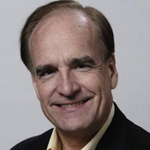 By Gregg Maryniak
By Gregg Maryniak
Gregg Maryniak is the Chairman of the Energy and Environmental Systems Track of Singularity University and the Senior Vice President of Education at the X PRIZE Foundation.
If you had a friend who suddenly started bragging about having a really slow Internet connection, you'd probably think that he was crazy. No one looks at their cell phone and says, "Hurray, I've only got one (signal strength) bar!" Yet there are people who still talk about being "off the power grid" as if that was a great thing to voluntarily do.
One of the reasons we in the developed world are as rich as we are is our astonishing easy access to low-cost, clean, reliable electrical power. This enables much of our present production of goods and services. By contrast, one of the characteristics of the developing world is that people often have to leave energy-poor rural areas and travel to cities to find this economic opportunity.
Most of the United States was a developing country (at least in terms of electrical power) until the Rural Electrification Act was passed in 1936, as part of President Roosevelt's New Deal. Life outside of the urban power grids was pretty restrictive. Relatively well-off farmers who wanted the benefit of radio programs from the outside world could take batteries into town where they could be charged over a period of a couple of days, much as people journey to distant towns in Africa today to charge their cell phones at great expense. Thousands of those American farmers set up small windmill generators to run their radios and sometimes lights. Very few people had reliable refrigeration.
When the Rural Electrification Act was passed in 1936, only about 10 percent of rural America had access to utility scale electric power. Fourteen years later, more than 90 percent of rural America was connected to the grid. And, most of that infrastructure was built by Rural Electrical Cooperatives, many of which are still in operation today. The legacy of universal electrical power is that economic benefits (as well as improved living and working conditions, especially for women) were more evenly distributed - further reducing the economic polarization between urban and rural areas that unfortunately still characterizes much of the developing world.
Back in the 70's some of the early proponents of solar power argued against what they called evil centralized power generation. In reality, what they wanted to replace was not the grid, but rather the primary energy source. But their argument threw the baby out with the bathwater and much of this misdirected anti-grid argument persists today.
Surprisingly, renewable power advocates are now among the strongest supporters of the power grid, in large part because they use the grid to sell their power back to local utilities in places that support "net metering."
The grid also provides a substitute for energy storage from renewable energy systems. A friend of mine who recently built his dream home near Denver installed a large photovoltaic system on the roof. When I asked him what kind of storage system he would use he told me that he did not need to have a bunch of messy and expensive batteries because he is connected to the grid. He sells power to his local utility when he has a surplus-which in his case is almost anytime the sun is overhead - and uses the resulting accounting credits to pay for power at night or when his need for energy exceeds the sun's immediate bounty.
The larger your energy network, the better you can deal with the fundamental problems of cyclical power like solar and intermittent sources like wind, by pooling available energy and getting it to the users when needed. Many innovators are suggesting implementing new local energy networks called microgrids to improve this ability to pool and share locally generated electricity.
One of the biggest impediments to increasing the percentage of renewable energy at scale is the present lack of grid capability. The existing US grid is really an ad hoc assembly of many networks that grew together and gradually developed interties and the ability to sell power to each other. It is becoming more and more difficult for transmission companies to get permission for new rights of way for power lines. The joke is that the slogan NIMBY (Not In My Back Yard) has been replaced by BANANA: Build Absolutely Nothing Anywhere Near Anyone! Fortunately others are beginning to realize that we need better, bigger and smarter networks if we are to increase the overall standard of living for humanity, while transitioning to renewable energy sources.
To achieve a dramatic increase in the use of solar, wind and other renewables, we need energy networks that concentrate, transport (and someday store) this power. It's time to realize that the grid is one of the developed world's greatest economic engines and a perfect example of what economists call "a public good."
How about a little respect for the good grid?
Visit X PRIZE at xprize.org, and follow us on Facebook, Twitter and Google+.
This material published courtesy of Singularity University.